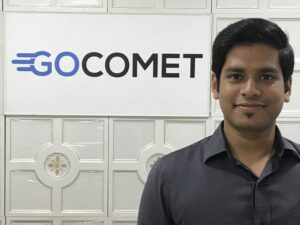
Almost every progress-oriented company wants it right now: artificial intelligence (AI). No, actually everyone wants machine learning, which is almost synonymous for many people. The feeling on the executive floor is often: that’s just the way things are done today, after all, we don’t want to be left behind by the competition. Such a drive may initiate necessary transformation, but sometimes it also obscures the view of the things that are actually needed to move forward.
The way is not the goal
A friend recently told me a fitting example of this: A few years ago, he worked for an AI startup that was invited by a large pharmaceutical company to give a board presentation. The strategists in the company wanted to identify early on the important players in the just emerging market, with whom a joint collaboration in the field of AI could make sense in the future. The presentation went well, but my friend and his colleague, an AI programmer, were subsequently in a moral quandary. The problems pressing the company did not need AI at all, but were much easier to solve by other means.
In the parking lot, the programmer then decided to show the company this error. He opened Excel on his notebook, programmed a solution for one of the problems mentioned and then sent the file to the building in sight, as a gift. A gift of what could have been a €250k AI project. I don’t know the details of the outcome of the story, but let’s just say that this honesty didn’t hurt either of them.
This example impressively shows that the path to success should generally go via the customer’s actual need and not necessarily via his verbalized wish. Whether the sensible path is a database query, a specialized heuristic, fuzzy logic or machine learning: For the customer, the focus should be on solving their task as sensibly as possible. Which method leads to the goal is actually secondary. And another task within the project may require a different approach. But if the customer’s primary focus is on what is currently being discussed on the panels of tech conferences, they will quickly fall into the machine learning trap. And they are literally using a sledgehammer to crack a nut.
The restaurant parable
You can illustrate all of these connections well with a visit to a restaurant. If I go to a restaurant and order a steak, even in an average restaurant I shouldn’t care how the chef prepares the steak: Grill, pan, oven, or maybe even a combination? As a diner, I could care less; I trust the chef to make the right decision and in the end, my expectations will be more or less met. Let’s assume that I don’t go to a restaurant alone and my companion orders filled puff pastry – I wouldn’t tell the chef how to prepare it. Different dishes require different preparation methods.
You can also fall into a culinary trap with a restaurant, just like companies do with AI. If you’ve watched a few episodes of “Chef’s Table” on Netflix, you may already be dreaming of new spheres of taste with the help of novel or rediscovered preparation methods. And then you’re sorely disappointed when a dish prepared in this way at your favorite restaurant doesn’t live up to your expectations or the steak doesn’t taste at all the way you like it. A good restaurant, on the other hand, adapts to its customers: The waiter finds out what the guest actually wants, makes a recommendation, and passes the request on to the chef, who prepares the dish the way the guest would like it.
A good cook is not an AI-only specialist
And this is also how the AI or rather the software business works: A good provider has an appropriately well-equipped “kitchen” with specialized employees who solve problems by means that lead to the best possible solution for the customer, and who are also honest enough to advise against the special request of “spicy jalapeños” on the children’s plate under certain circumstances. It may or may not always be machine learning.
Ideally, it happens as it did to a colleague on vacation in Italy: In a restaurant in Naples, there was no menu, and the waiter asked instead how she had spent the day. Afterwards, the waiter briefly thought about the answer and came back an hour later with the food, which ended up being the highlight of the vacation. The details of that multi-course meal would go beyond the scope of this post, so let’s just say in brief that the flavor ranged from zucchini flowers filled with ricotta, to lukewarm octopus salad and hake cooked in steam. Obviously exactly the taste experience my colleague was looking for that day.
Similar to this experience with the Italian waiter, companies should therefore pick solution providers who approach them in a problem-oriented manner and ideally have expertise in various technologies, in order to achieve the optimum result for the customer. There is a good chance that this is precisely when their tastes will be met.
This article was first published on Linkedin.
- adapts
- AI
- All
- article
- artificial intelligence
- Artificial intelligence (AI)
- BEST
- board
- Building
- business
- care
- collaboration
- Companies
- company
- competition
- conferences
- Connections
- Customers
- Database
- day
- DID
- Early
- employees
- Excel
- executive
- finds
- First
- Focus
- food
- Forward
- future
- good
- Guest
- Highlight
- How
- How To
- HTTPS
- identify
- Intelligence
- IT
- Italy
- large
- lead
- learning
- machine learning
- Market
- move
- Netflix
- order
- orders
- Other
- PAN
- parking
- People
- Pharmaceutical
- project
- restaurant
- secondary
- sense
- So
- Software
- SOLVE
- startup
- Steam
- success
- tech
- Technologies
- The Future
- Transformation
- Trust
- View
- What is
- WHO
- within
- works
- years











